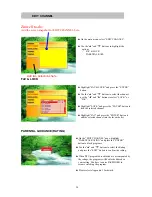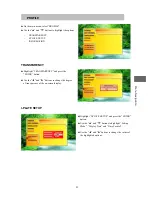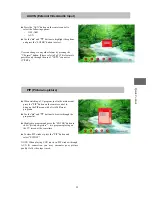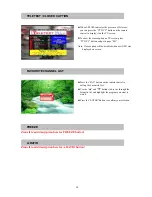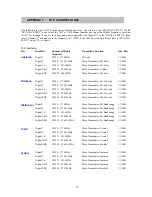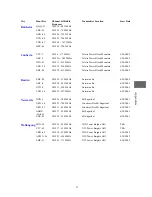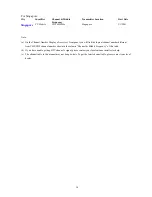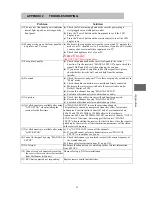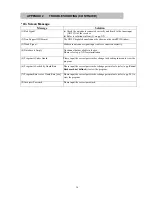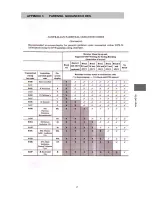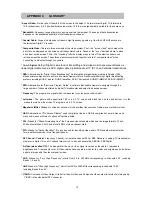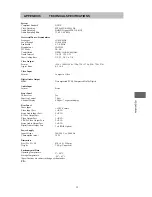
APPENDIX 4
GLOSSARY
* Aspect Ratio:
It is the ratio of the width of the screen to the height. The two relevant digital TV formats are
16:9 (widescreen) or 4:3 (the traditional screen ratio). 16:9 is more ergonomically suitable for the human eye.
* Bandwidth:
Frequency range allows for carrying a certain radio signal. The speed of data transmission
depends on the available bandwidth of the transmission channel.
* Coaxial Cable:
A type of cable used to transmit high frequency signals e.g. from the VHF/UHF antenna to
the terrestrial Digital TV receiver.
* Composite Video:
There are three elements of the video system: First - the " active video" which means the
picture to be displayed on the screen and its associated colors. Second - the " sync" decides where to place
each pixel on the screen. Third - the " blanking" tells the display when to turn off the electron beam so no
retrace across the screen. These three elements combined together is called " composite video" when
connecting to a display through connectors.
*
Dolby®
Digital:
Dolby
®
Digital is a method of transmitting and storing multi-channel soundtracks via
newer digital media such as DVD, digital cable, digital broadcast TV (DTV), and satellite transmissions.
* DVB:
Abbreviation for "Digital Video Broadcasting". An international organization created in October 1993,
whose primary objective is to achieve a common framework for all technical platforms of digital broadcasting
systems including DVB-C (cable), DVB-S (satellite), DVB-T (terrestrial), DVB-MC (MMDS), DVB-CS(SMATV)
.
* EPG:
Abbreviation for "Electronic Program Guide". A software that enable viewers to navigate through the
large number of channels offered by digital TV broadcaster and select the desired services.
* Frequency:
The property of a signal which is measured in cycles per second(=Hertz).
* Letterbox :
The picture with aspect ratio 16:9 in a 4:3 TV screen with blank lines on top and bottom. It is the
means to watch a wide screen TV program on a 4:3 TV screen.
* Megahertz (MHz):
Millions of cycles per second, which describes frequencies of radio wave or electric current.
* OSD
: Abbreviation of "On Screen Display", used in digital set top box. OSD is comprised of a main menu and
many sub-menus with lots of options of functions inside.
* PAL:
Stands for "Phase Alternating Line", the European video standard which has the image format of 4 by 3,
625 horizontal lines, 50 Hz and a total 8 MHz of video channel width.
* PID :
Stands for "Packet Identifier". It is a code used for identifying video, audio PCR and other elements that
form a particular service in the transport stream.
* RF Channel:
Radiated Frequency Channel, for instance channel 28 for SBS Network in analog TV transmission.
However in digital TV, one RF channel may carry 4 to 6 sub-channels like SBS HD, SBS Digital.
* S-Video (also called Y/C):
The standard for the way a video signal is carried on the cable. Y represents
brightness and C represents color. S-Video cables have separate wires for the color and brightness so it offers a
better picture quality than the composite video.
* VHF:
Stands for "Very High Frequency", starts from 30 to 300 MHz corresponding to channels 2-12, including
Bands I, II and III.
*
UHF:
Stands for "Ultra High Frequency", starts from 300 to 3000 MHz corresponding to channels 13-69,
including Bands IV and V.
*
Y/Pb/Pr:
Component Video Output. It is better than S-Video and Composite Video output in terms of picture quality.
Y/Pb/Pr is the standard HDTV connector.
38

